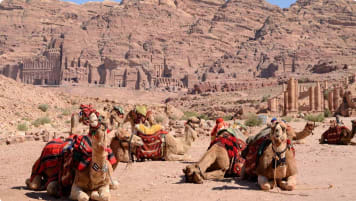History of Mosques in Iran and Central Asia
During the Islamic period of Iran, glazed bricks were used to create breathtaking and mesmerising wall and ceiling designs in mosques. Click through to read more.
2 Dec 19 · 11 mins read
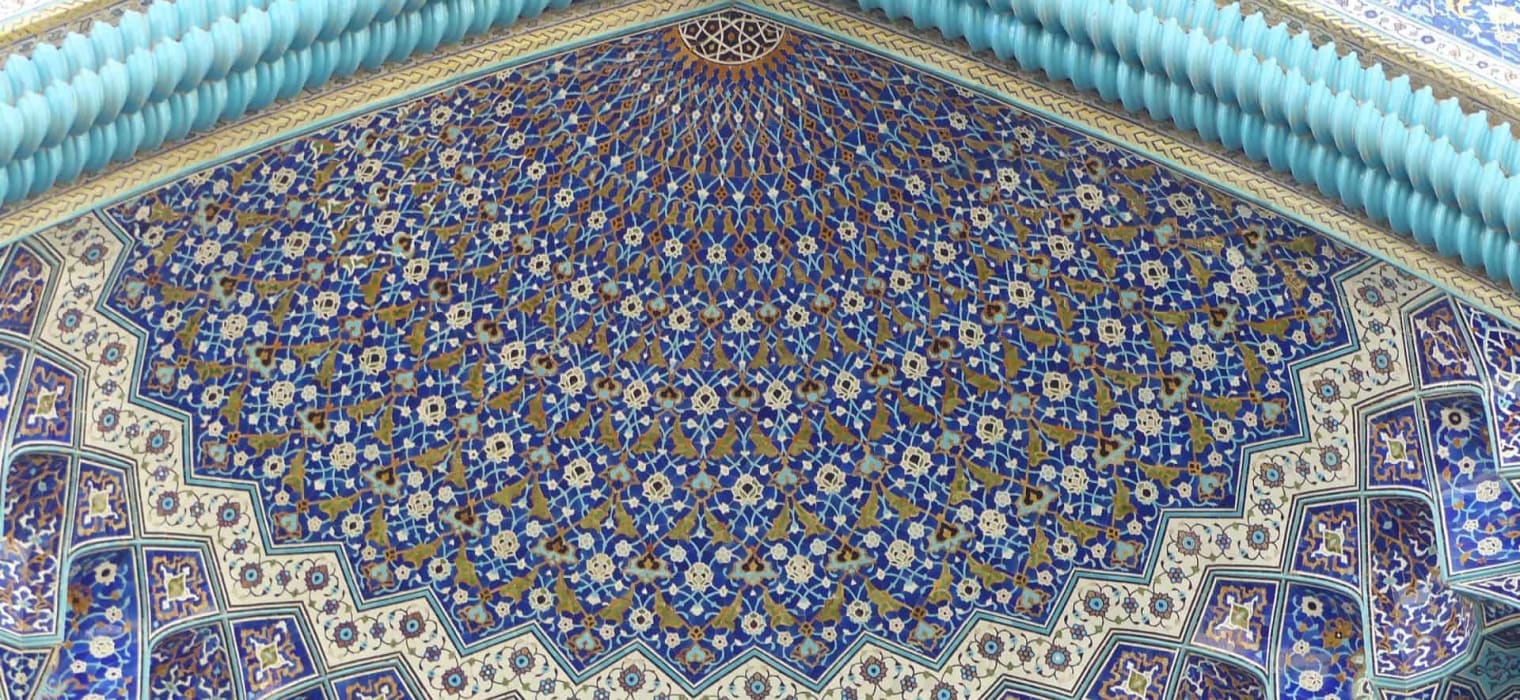
History of Mosques in Iran and Central Asia
As we’ve written in our previous article, Elements of Mosque Architecture, the word “mosque” derives from the Arabic word “masjid” which means “a place of prostration”, referring to the daily ritual prayer where Muslims kneel and touch their foreheads to the ground as a sign of submission to God. Muslims pray five times a day every day, with jum’ah or Friday noon prayer, as the most important prayer of the week. This important prayer service is held in the main mosque (the masjid jāmi or “Friday mosque”) of a city or town, where worshippers pray as a congregation.
There are several congregational mosques all over the world, showcasing a wide range of architecture and design, reflecting their histories and fascinating the Western world for centuries. According to Sussan Babaie in “The Splendid Mosques of Iran and Central Asia” published in Mosques: Splendors of Islam (Rizzoli International Publications, 2017, pp. 146-177), the history of mosque design in Iran and Central Asia is distinct from the Arabian and Turkish Mediterranean architecture that developed elsewhere in the Islamic world. This difference can be traced to the influence of the Persian Empire and the empire’s religion, Zoroastrianism. In this article we will take a closer look at the architectural elements and evolution of mosques in Iran and Central Asia.
This article is based on Babaie’s essay, which is a chapter from Mosques: Splendors of Islam (Rizzoli International Publications, 2017) edited by Jai Imbrey, with a foreword by Prince Amyn Aga Khan and preface by Leyla Uluhani. We also linked other resources throughout this post.
If you’re interested in Iran, you might want to read some of our other articles:
- Elements of Mosque Architecture
- Questions About Iran
- Tehran Through Time
- Safavids in Persia
- Beauty and Artistry in Iran: Persian Garden and Persian Mosaics
- History of Persian Carpets
- Persepolis in Iran, a famous place on any escorted small group tour
- Travelling in Iran – the history and monuments of ancient Persia
- Thirty must see places when visiting Iran
Key Elements
Babaie mentions the two key elements of Iranian and Central Asian mosque architecture:
- predominance of rounded forms, particularly arched and vaulted spaces
- predominance of brick–later glazed tiles–as construction material
This is a striking difference compared to early Arab-Mediterranean design and construction, which used stone as material and favoured a flat roof supported by pillars. (The Ottoman mosques would later adopt the dome.)
The vaulted spaces of Iranian mosques were usually formed with four supporting elements, either columns or piers. The number four appears in this ancient Iranian building type of chahar taq (“four arches”) and also in the ancient Iranian garden design of chahar bagh (“fourfold garden”), a model used as a blueprint for landscaping throughout the Arab world and former Moorish territories in Asia and Europe.
Chahar Taq, “Four Arches”
The chahar taq is associated with Zoroastrian fire temples, where a burning fire needed to be seen from all sides (see photo of the ancient temple of Ateshgah in Baku, Azerbaijan below), and as we’ve written before the chahar bagh has its roots in the 6th Century palace gardens of the Achaemenid Empire (also called the First Persian Empire) under Cyrus the Great.
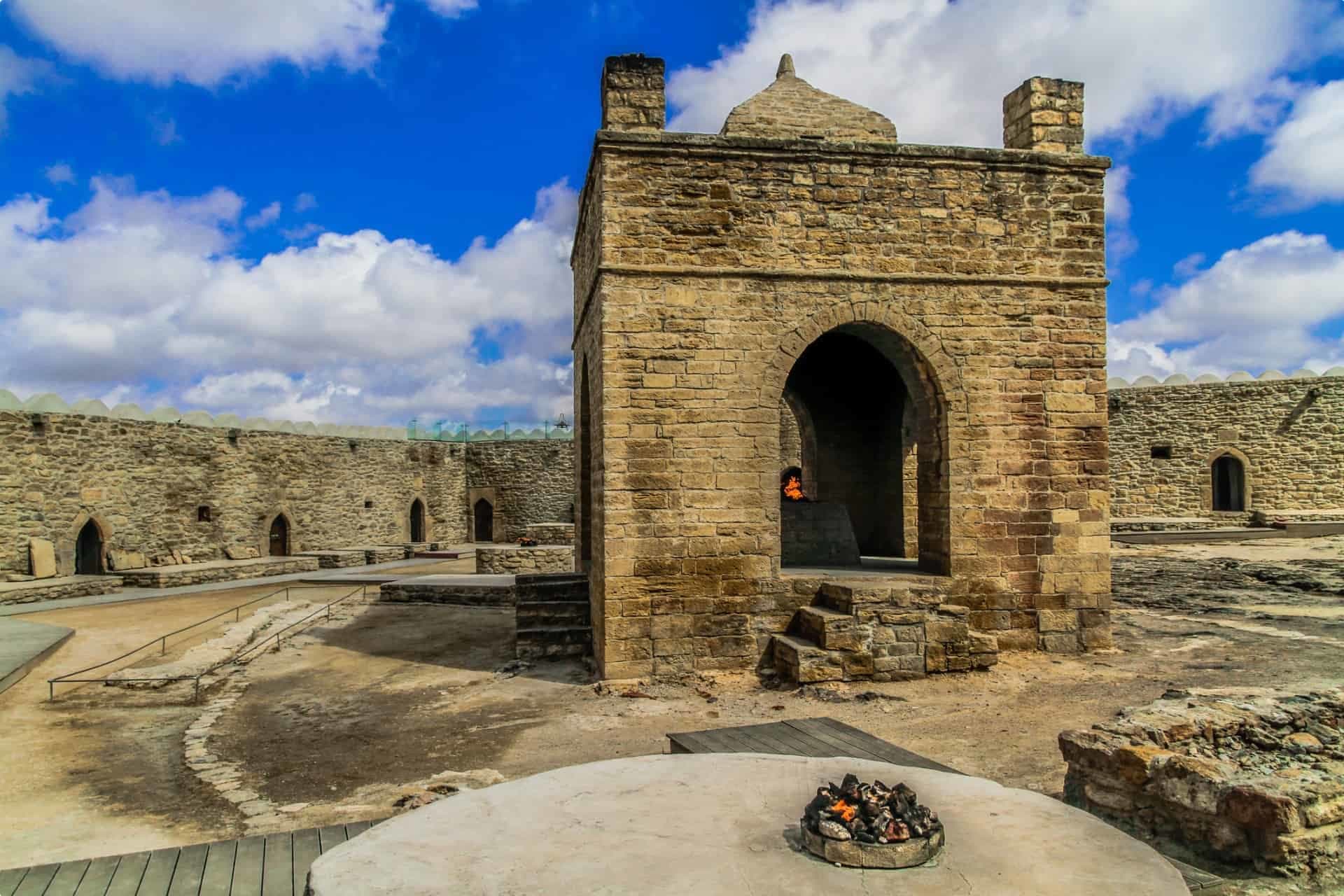

The Persian Empire is the name given to the vast empire centred in modern-day Iran that ruled for several centuries, from the sixth century BC (Achaemenid dynasty) to the twentieth century AD (Qajar dynasty). Under the Achaemenid dynasty, Zoroastrianism was the religion of the empire, and the chahar taq and the chahar bagh symbolised the Zoroastrian division of the universe into four elements: earth, water, wind, and fire. During the rule of the Sasanian Empire (224–651), the last Persian dynasty to rule in pre-Islamic Iran, architects used the four-ayvan style for facade composition: a large vaulted space closed on three sides and open on the fourth, facing a courtyard.
Hypostyle, “Under Pillars”
The Muslim conquest of Persia in 651 AD led to the decline of the Zoroastrian religion, but the fourfold form persisted as it also had a resonance with Islam, symbolising the four rivers of life described in the Qur’an. The Persian ayvan was adopted into Arabic as iwan, and the four-iwan style of mosque construction was used as an elaboration on the Prophet Muhammad’s early “courtyard mosque” or hypostyle (“under pillars”) design.
The hypostyle design allows for the construction of large spaces, such as temples or palaces, without the need for arches. You can see this construction style in the ruins of Persepolis, and in the Great Mosque of Kairouan in Tunisia, built in the 9th century and which follows the hypostyle design of the Prophet’s early mosque.
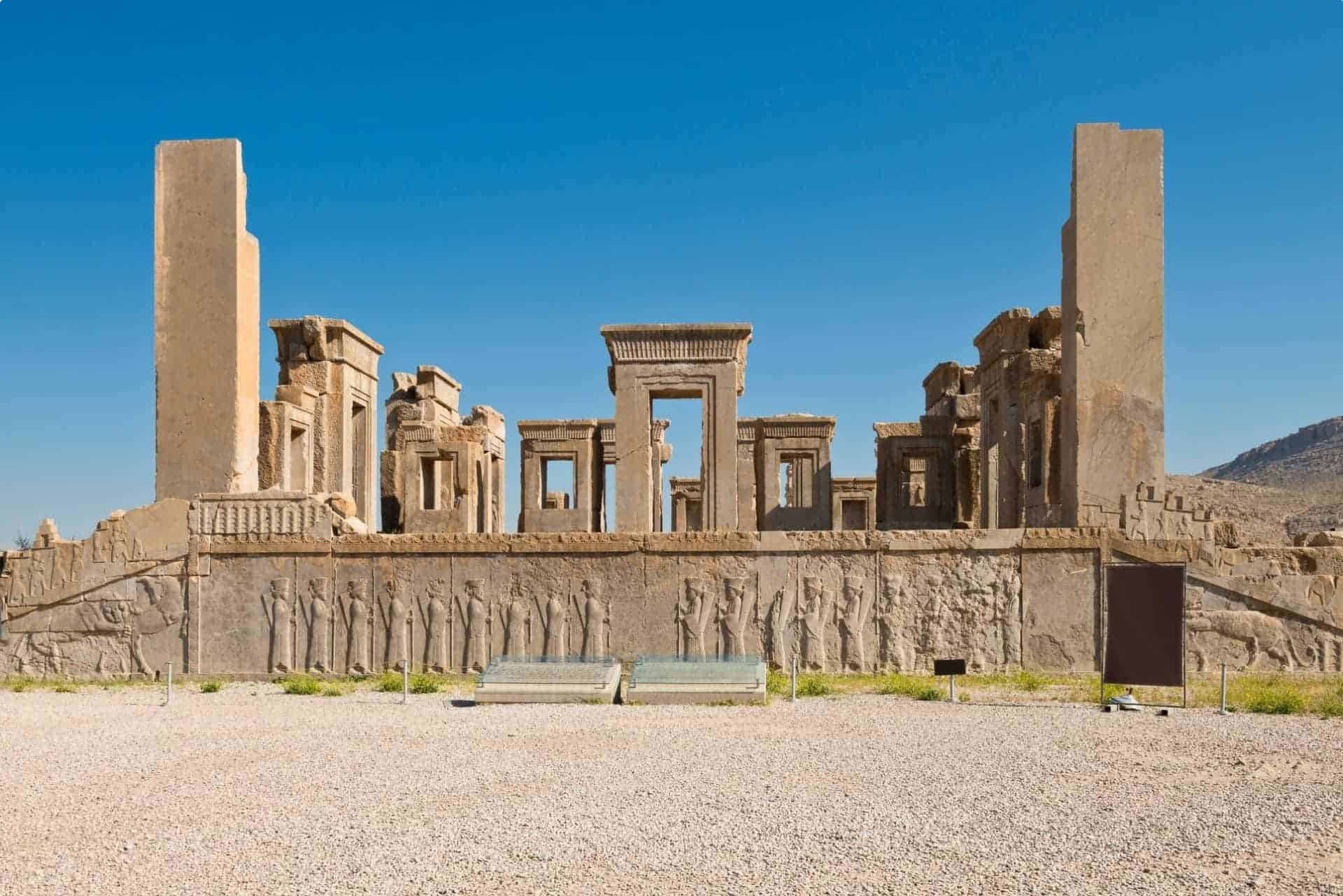

Jameh Mosque or Friday Mosque (Isfahan, Iran)
The Great Mosque of Isfahan, also known as Jameh Mosque or Friday Mosque, also began its life as a hypostyle mosque in the 8th century. This design defined early Islamic architecture, until the four-iwan style was introduced in the 11th century, drawn from ancient Persian ayvan design.
You can still see the hypostyle area in the Friday Mosque, but the mosque itself was converted into the four-iwan style by the Great Seljuqs in the 11th century. The Great Seljuqs was the main branch of a Turkic dynasty that ruled over Iran, Iraq, and much of Anatolia.
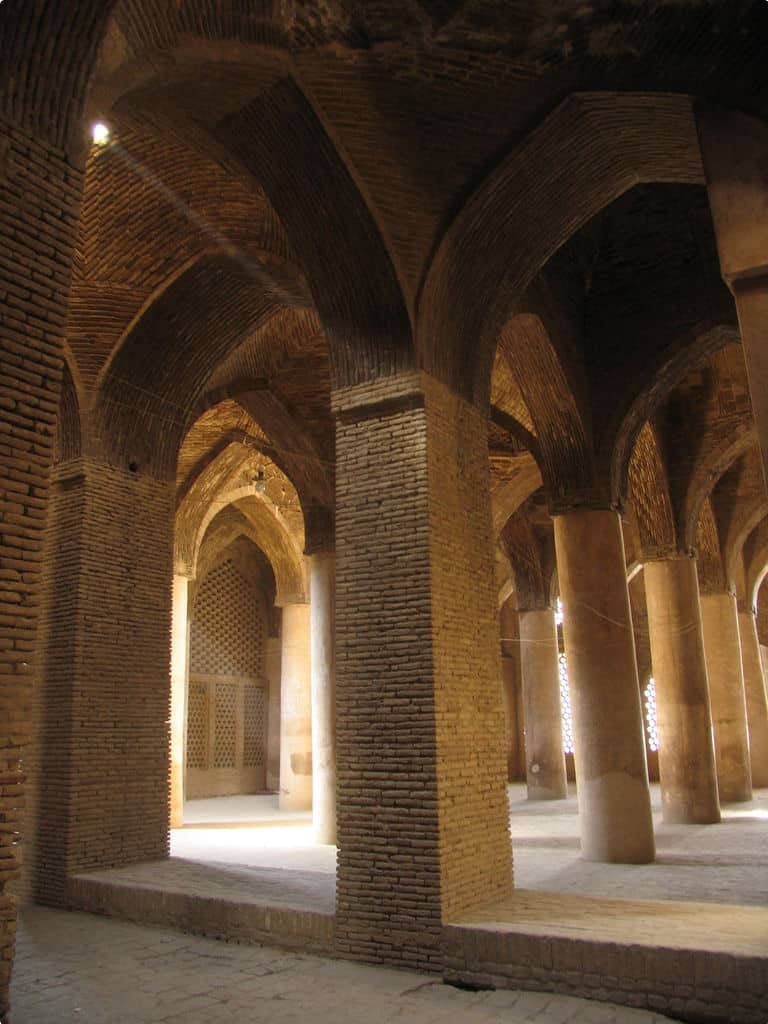
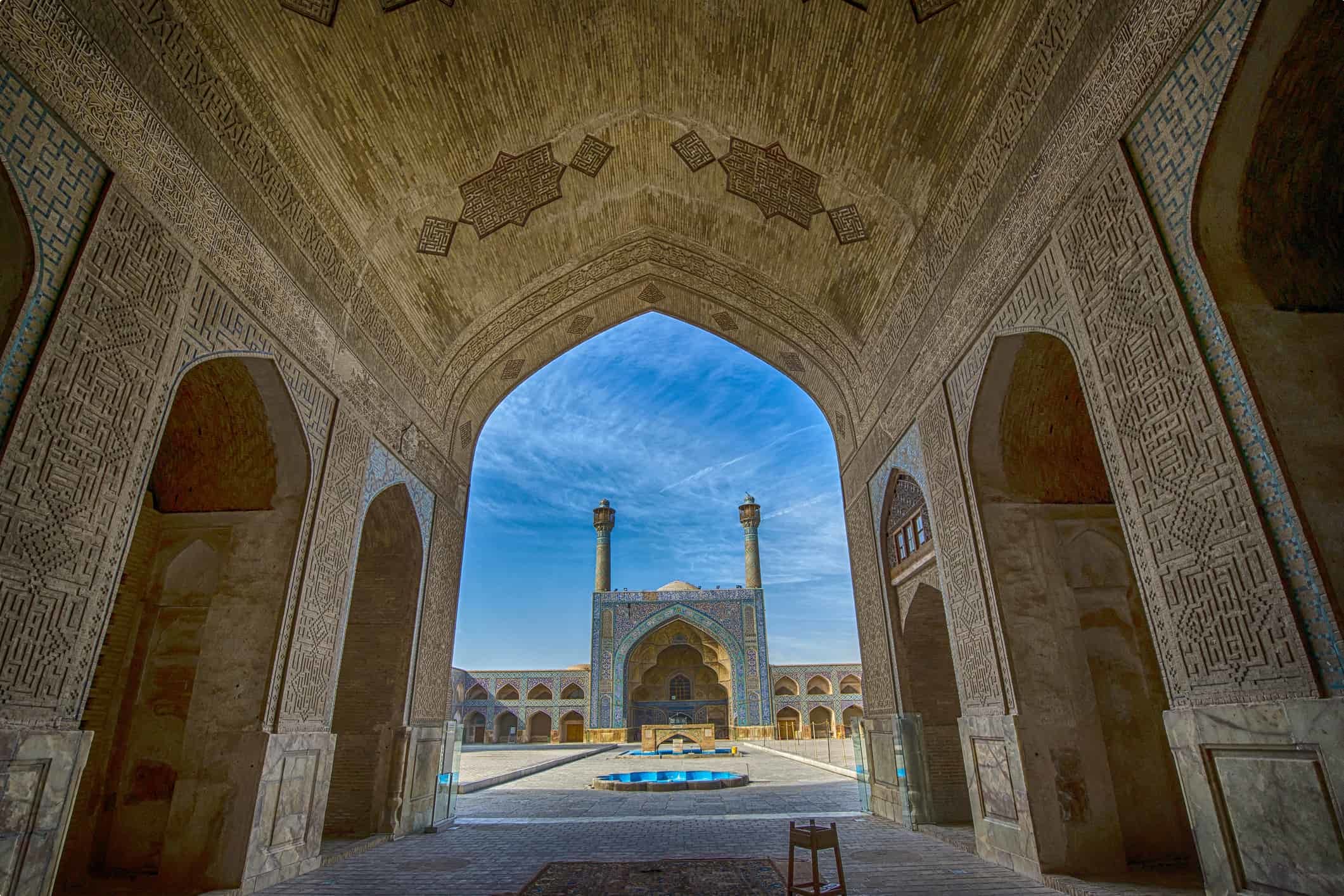
Seen in the photo above is the iwan of the Friday Mosque facing Mecca, the qibla iwan, which in mosques built in this style is often the largest and most ornately decorated vaulted opening. (Qibla is the orientation towards Mecca.) In the Friday Mosque, the qibla iwan is also flanked by minarets, the towers from which the call to prayer is announced.
Two rival Seljuq viziers of Sultan Malik Shah (reigned 1072–92) added two domed chambers. The first dome, located south of the mosque, was constructed over the mihrab of the original hypostyle mosque by the vizier Nizam al-Mulk around 1087. The mihrab is the semicircular niche often gilded or ornately decorated located in the qibla wall, the wall facing Mecca and where worshippers should face when praying. This dome was larger than any known dome in the Islamic world at the time.
While Nizam al-Mulk’s dome was impressive due to its size, the smaller, northern dome constructed by his rival a year later was impressive due to its interlocking geometric patterns. Taj al-Mulk commissioned the domed chamber around 1088, functioning, according to Babaie, as a space where the sultan would stop upon entering the north gate. This second domed chamber, locally known as Gunbad Khaki (“earthen dome”), ended up being the more famous part of the mosque due to its design, and is regarded as a masterpiece of Seljuq brickwork engineering.

The Friday Mosque served as a prototype for later mosque designs throughout Central Asia, replacing the hypostyle mosques from Egypt to India.
Bibi Khanum Mosque (Samarkand, Uzbekistan)
Another ruler who influenced mosque architecture in Iran and Central Asia was Timur (Tamerlane). Timur saw himself as a successor of Genghis Khan and in the 14th century went on to conquer the separate khanates to rule them under one empire. His capital was his hometown, Samarkand (in present-day Uzbekistan), where he built his congregational mosque, the Bibi Khanum Mosque (also spelled Bibi-Khanym Mosque).

The gigantic mosque, named after Timur’s wife and located in front of the madrasa (Islamic religious school) where she was buried, was built from 1399 to 1404 and became the centrepiece of his imperial capital. Timur was said to have employed architects from Shiraz, Iran and Delhi, India and brought in stone columns carried by elephants. This gesture towards lore might have been influenced by the massive scale by which the mosque was constructed. The Bibi Khanum Mosque was based on the four-iwan design already popular in Central Asia, but it also pushed contemporary construction techniques to their limit. The builders and architects, on Timur’s orders, created a 41-metre-high cupola and a 38-metre-high entrance portal, as well as an enormous marble rahla or Qur’an stand. This ambitious project surpassed the monumentality of previous constructions in the region, but it was sadly also rushed and led to problems of structural integrity.
Despite the problems, the Bibi Khanum Mosque and the other monuments in Timur’s city centre of Registan in Samarkand started a hunger for massive structures among Central Asian rulers. Timur also influenced mosque ornamentation, particularly the use of colour.
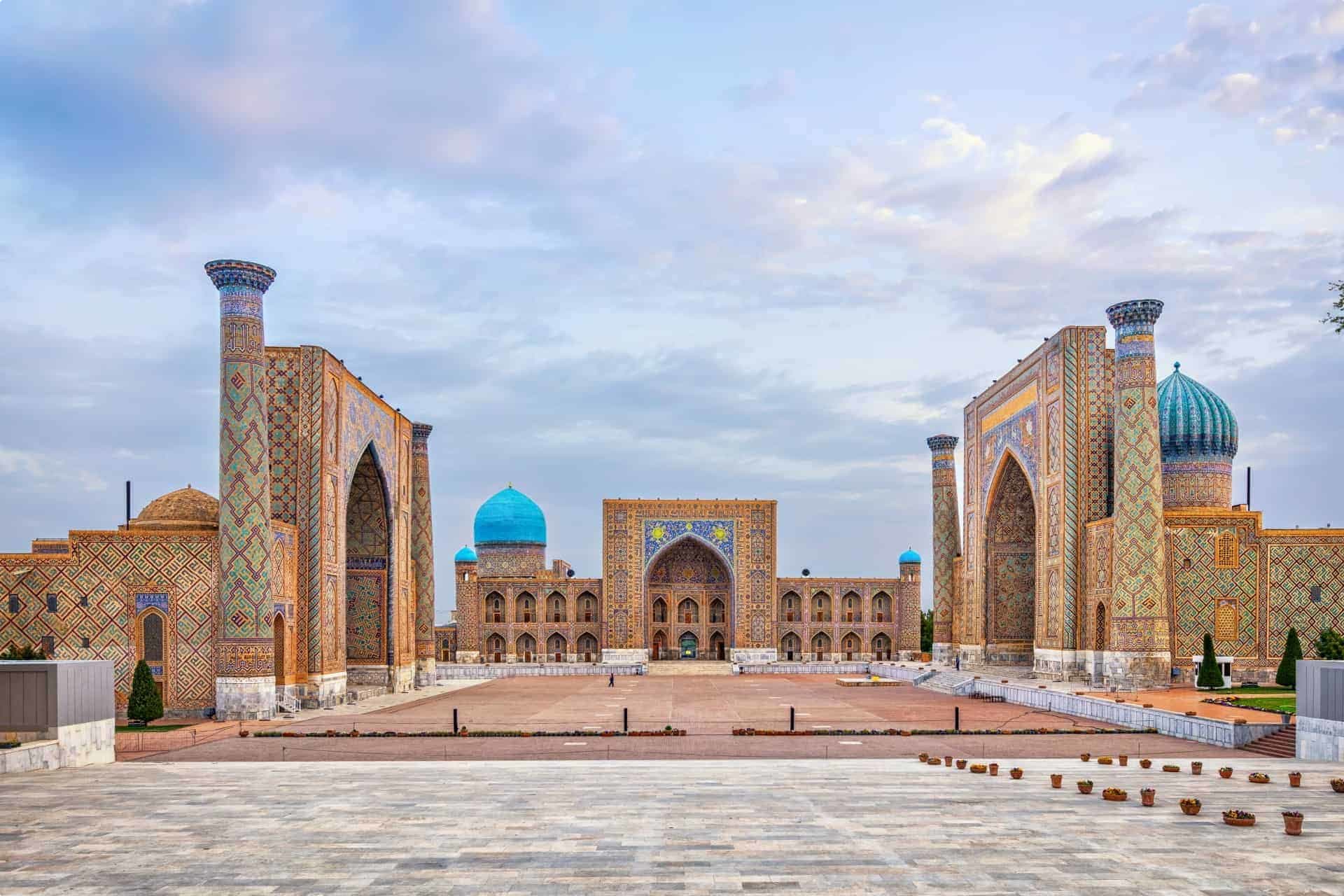
Tile, used to weatherproof clay bricks which would otherwise erode in the extreme conditions of the desert, has been used as decoration in Iran for millennia. Tile decoration evolved from simple stones to actual fired and glazed brick during the Achaemenid Empire. During the Islamic period of Iran, glazed bricks were used to create breathtaking and mesmerising wall and ceiling designs in mosques, with turquoise becoming a popular colour in the 10th century. In the 13th century, artisans began using the Moraq tiles (mosaic style) technique. Here multicoloured tile panels were created by cutting tiles of various colours based on a pattern, piecing the tiles together using liquid plaster as glue, and applying the whole hardened panel on the wall. Tile manufacturers eventually introduced haft rangi or “seven-colour” tiles, which allowed for even more complex designs. Samarkand’s artisans made use of this colourful tiling technique on building surfaces, sometimes even enhanced by gilding, as can be seen in the Tilla Kari (“gold works”) Mosque and Madrasa (17th century).
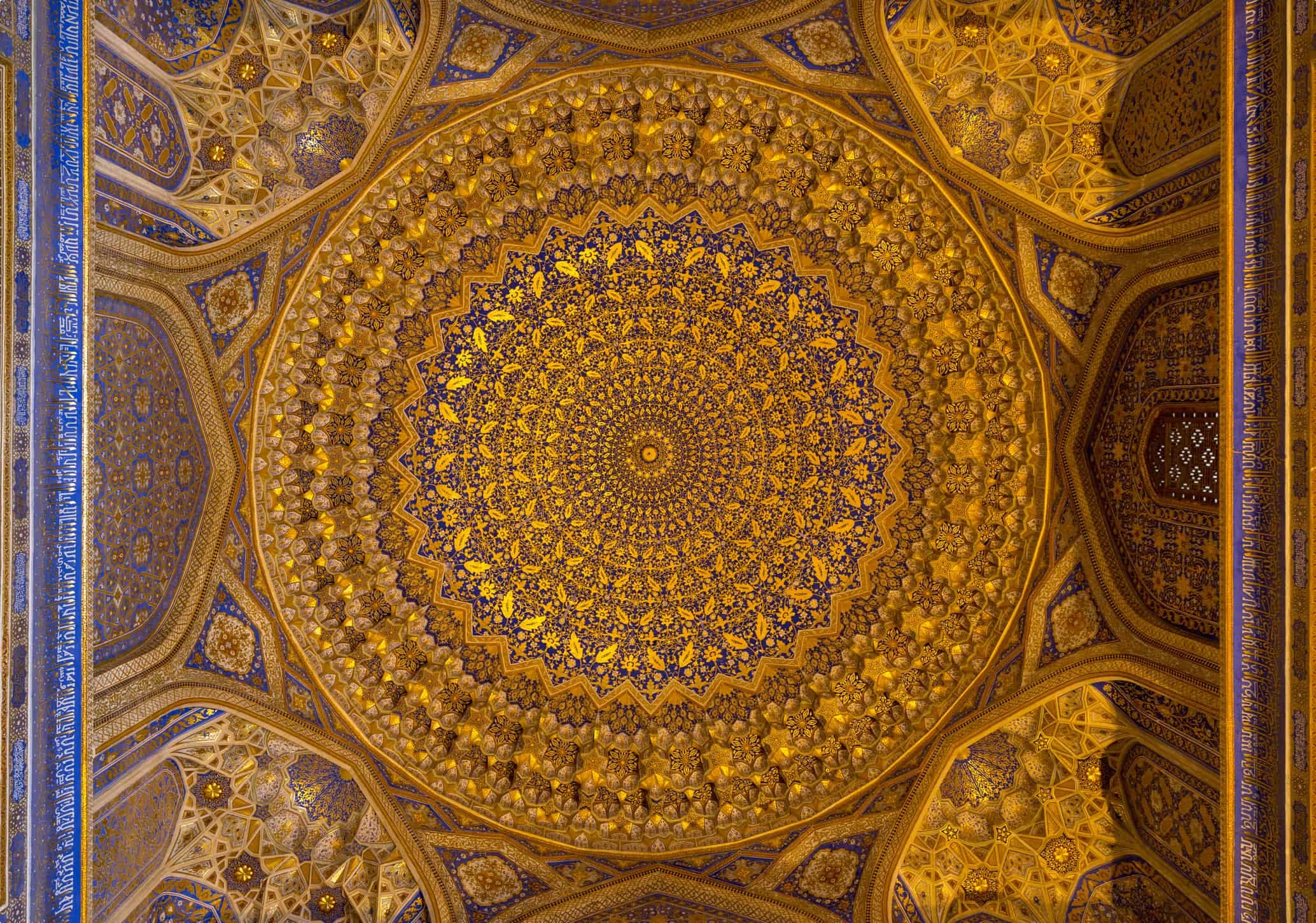
Safavid Architecture
This use of colourful tiling became characteristic of Safavid architecture in Isfahan, Iran. The Safavid Empire was established in Iran in the 16th century after the dynastic fragmentation that followed Timur’s death. A Safavid ruler, Shah Abbas I, moved the capital of his empire from Qazvin to Isfahan in 1598 in an effort to avoid assaults by the Ottomans and to control the Persian Gulf. Isfahan underwent massive urban planning, producing the Naghsh-i Jahan Square (“Image of the World”, later known as Imam Square after the 1979 Iranian Revolution) surrounded by the monuments built during Shah Abbas’s rule:
- Shah Mosque, now known as the Imam Mosque – located south side of the square
- Ali Qapu Palace – west side
- Sheikh Lotfollah Mosque – east side
- Qeysarie Gate, which opens into the Isfahan Grand Bazaar – north side (the Friday Mosque is also located in this area)
The massive constructions were funded by the wealth Shah Abbas brought into the royal domain through retaking land held by the Kizilbash, Turkmen tribes who supported the Safavid dynasty, and increasing trade with Europe.
The Imam Mosque, built between 1611 and 1630, is considered an architectural masterpiece and a treasure of Islamic architecture. Like the Friday Mosque, it was built in the four-iwan style. It also features haft rangi tile ornamentation. The Imam Mosque was the second congregational mosque built in Isfahan, and with its grandeur and massive scale was designed to replace the much older Friday Mosque as the site of the weekly Friday prayer service in the city. The Naghsh-i Jahan Square itself is not aligned with Mecca, so the Imam Mosque had to be angled at 45 degrees so it faces the correct direction. This also ensures that the mosque was visible wherever the viewer is standing on the Square. Both the mosque and the square are listed by UNESCO as World Heritage Sites.
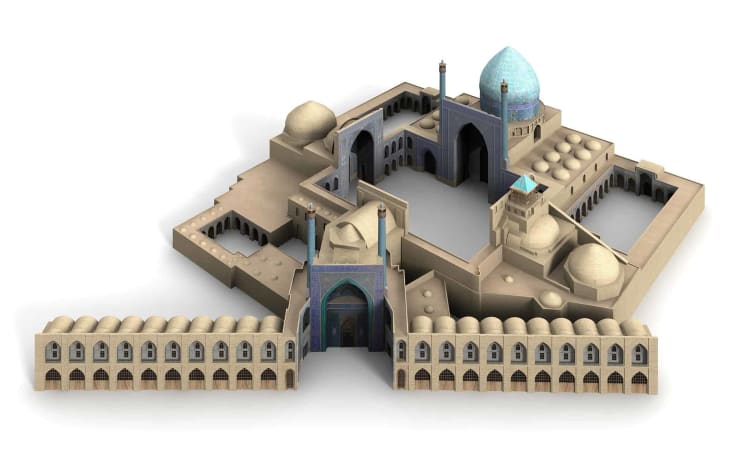
Standing on the eastern side of the square is the Sheikh Lotfollah Mosque, named after Shah Abbas’s father-in-law. It was built for the private use of the Shah and his family, and resembles a large maqsura than a traditional congregational mosque, according to Babaie. A maqsura is a demarcated area closest to the mihrab (where the imam stands to lead the prayer and give his sermon) that is reserved for rulers and their retinue. The Sheikh Lotfollah Mosque has no courtyard nor minaret or tower from which the faithful are called to prayer, as this is a private royal mosque. Its portal faces the royal residence, Ali Qapu Palace (ali=”great”; qapu =”gate”). The mosque is now open for visitors
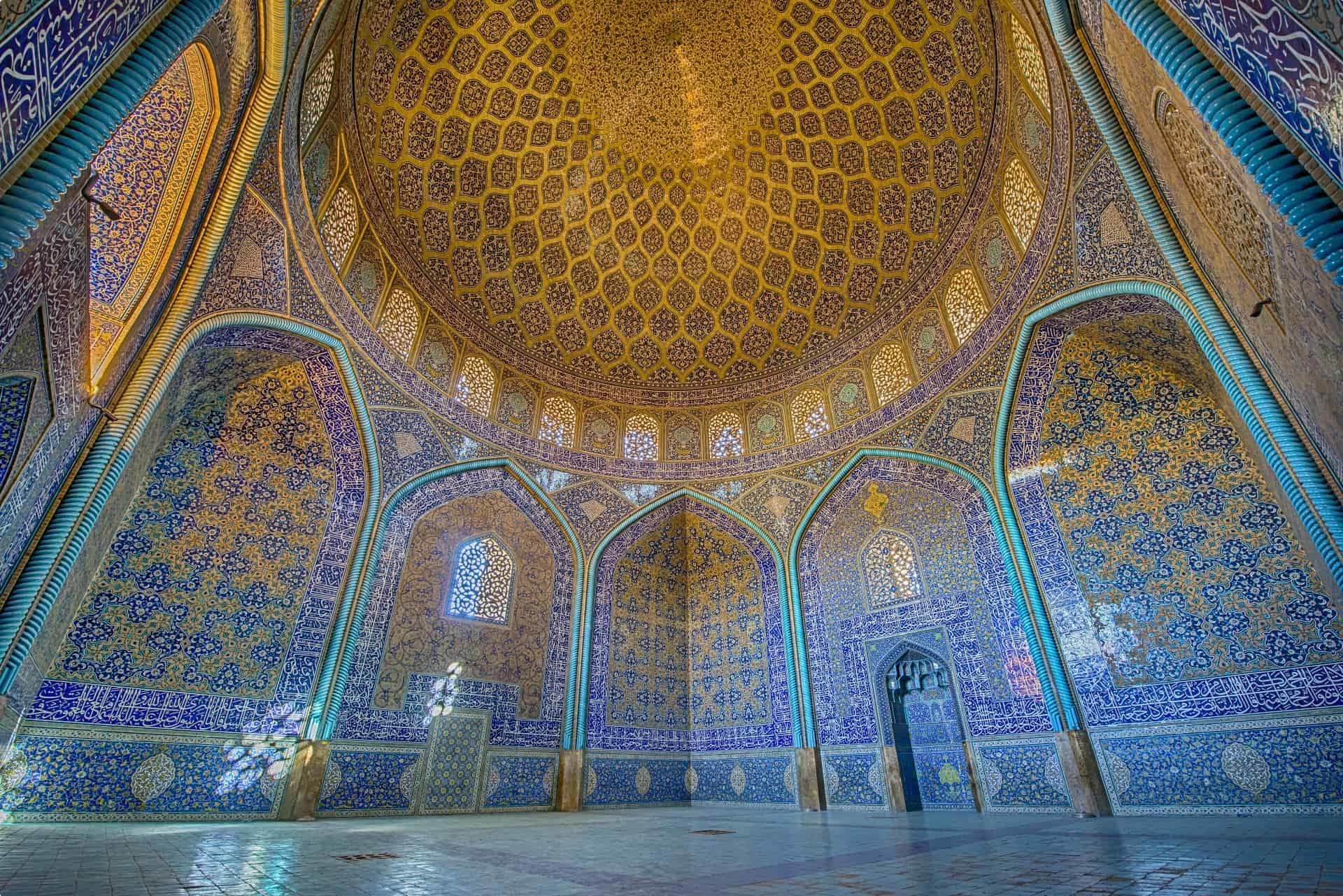
Ornamentation continued into the late modern era. The 19th century Nasir al-Mulk Mosque in Shiraz, Fars Province, Iran was constructed between 1876 and 1888 during the Qajar dynasty. The Qajars were a Turkic tribe who held ancestral lands in present-day Azerbaijan (then part of Iran) and Agha Mohammad Khan in 1786 established his dynasty’s capital in Tehran, Iran’s present-day capital.
The Nasir al-Mulk Mosque is also known as the “Pink Mosque” because of its rose-coloured tiles and richly coloured stained glass. Built to catch the morning sun, the Pink Mosque is best appreciated in the morning when sunlight shines through its stained-glass windows, turning its interior into a kaleidoscope.
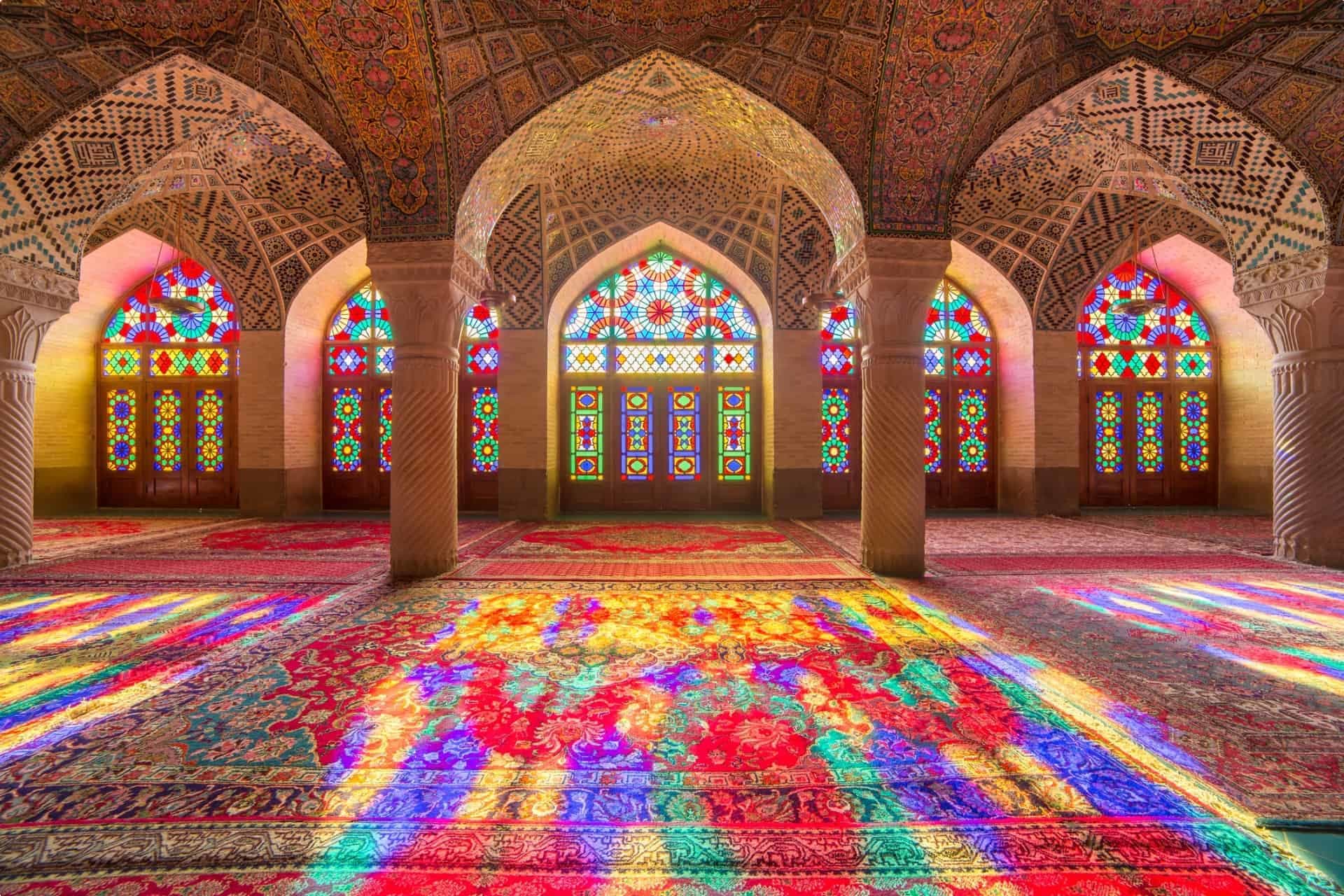
Travel to Iran with Odyssey Traveller
This article is written as a backgrounder for a tour of Iran. Our escorted small group tours are perfect for mature travellers with an active mind, seeking to learn about one of the world’s oldest civilisations.
Discover the fascinating history and culture Iran has to offer on our Iran Culture and History small group Iranian tour. This 17-day Iran travel tour focuses on the west of Iran, taking in key destinations. On this amazing travel experience, we will learn about the history of Iran, take in the breathtaking landscapes, and sample authentic Persian cuisine.
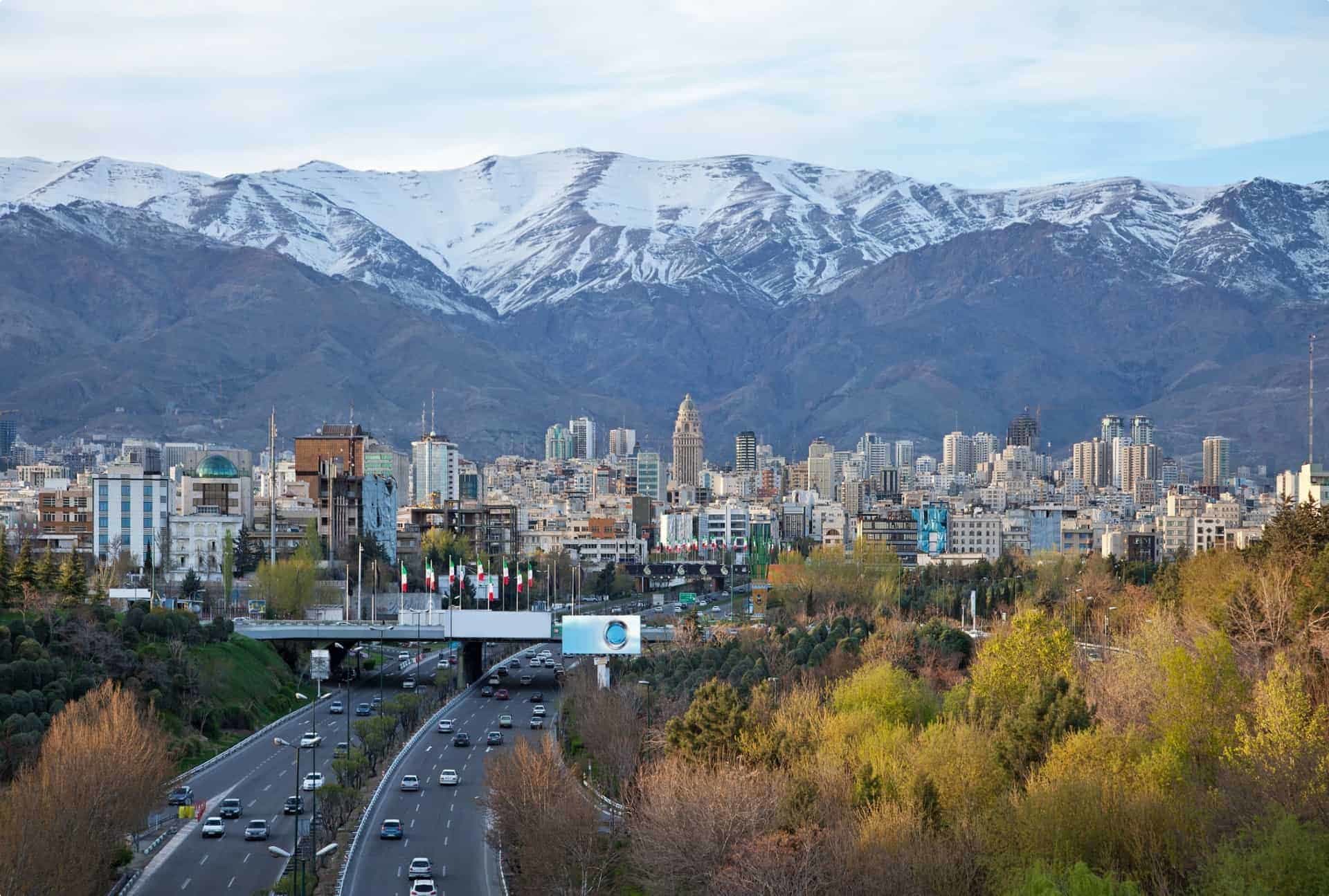
Our trip to Iran begins and ends in Tehran, the modern capital of this ancient civilisation. We then travel to nine destinations within the country, taking in many of Iran’s world heritage sites. An important stop is Isfahan, once a major city on the Silk Road and the location of the grand mosques we mentioned in this article.
We will view the lavish Golestan Palace, home of the Qajars and originally built in the Safavid era, which exhibits the wealth and extravagance of the Persian monarchy. Another UNESCO-listed site is Pasargadae, where Cyrus the Great, founder of the Achaemenid dynasty, is entombed. We will also visit Persepolis, founded by Darius I in 518 BCE. Persepolis, the capital built by the Achaemenid kings, is located about 60 kilometres northeast of Shiraz. It was built on an immense half-artificial, half-natural terrace. The importance and quality of the monumental ruins make it a unique archaeological site.
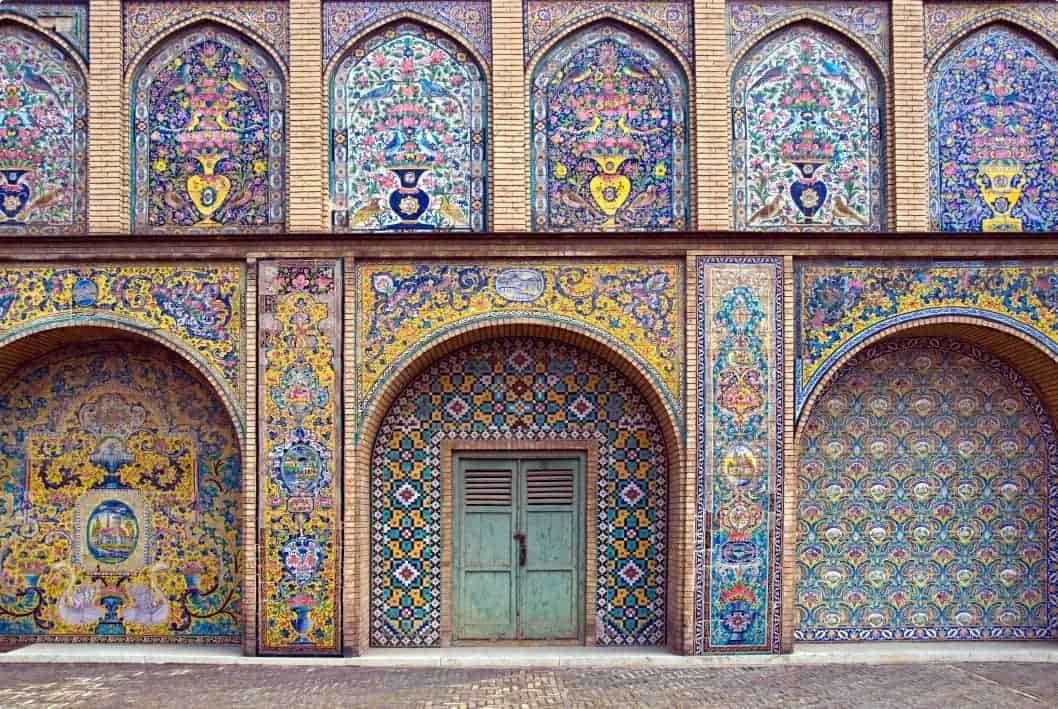
Other Tours
If you want to learn more about mosque architecture beyond Iran, join our 29-day fully escorted small group Silk Road tours which take you on a journey across the Eurasian steppe, tracing the ancient trade routes collectively known as the Silk Road.
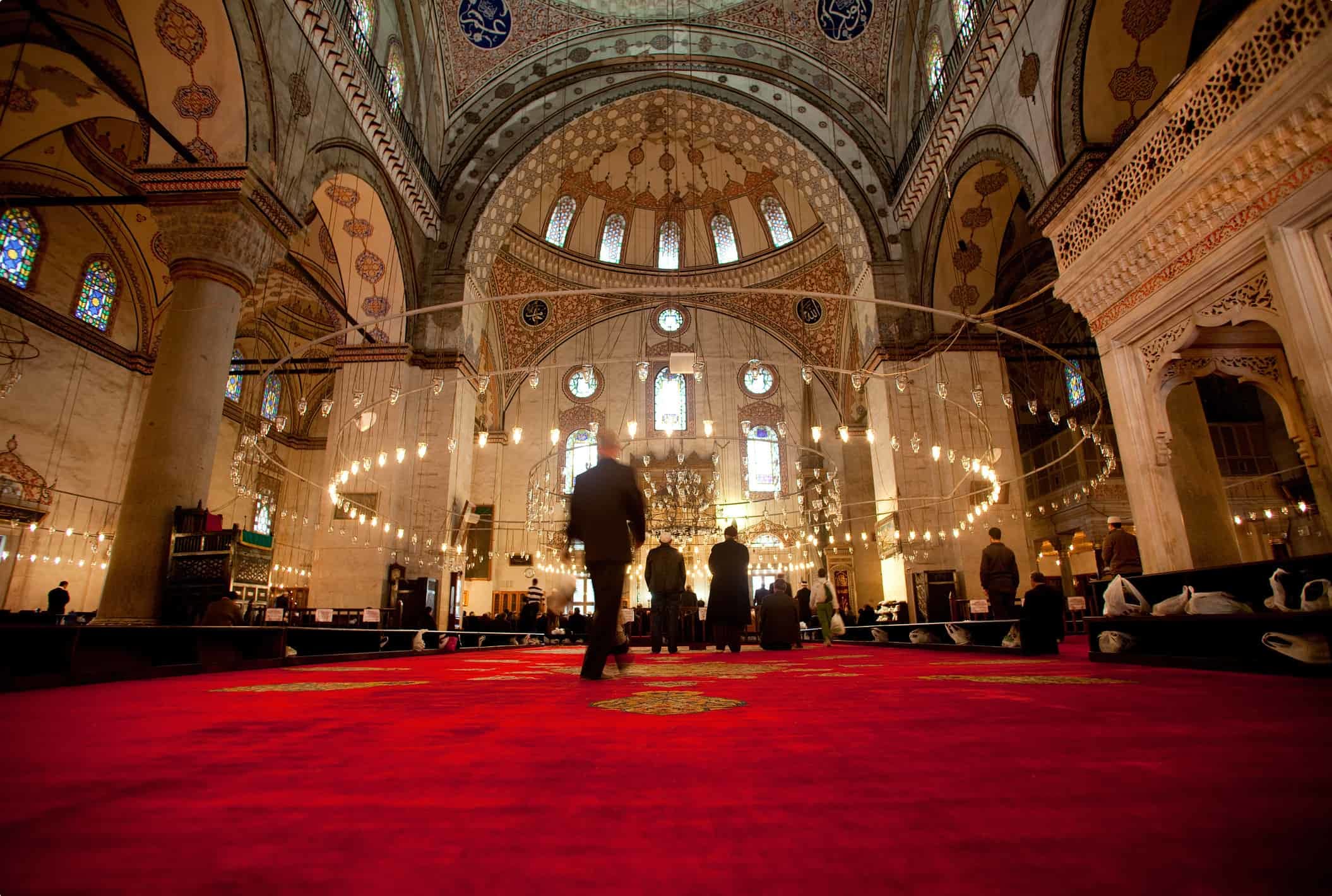
Odyssey Traveller’s Ancient Turkey escorted small group history tour visits some of the most spectacular, varied, and historically important sites in the ancient world. We begin and end in the “city of Islam”, Istanbul, where east meets the west on the Bosporus.
Just click through the links if you are interested in this style of incredible adventure travel.
About Odyssey Traveller

We specialise in educational small group tours for seniors, typically groups between six to 12 people from Australia, New Zealand, USA, Canada and Britain. Our maximum number of people on a tour is 18 mature aged travellers. Typically, our clients begin travelling with us from their mid 50’s onward. But be prepared to meet fellow travellers in their 80s and beyond! Both couples and solo travellers are very welcome on our tours. We have some 150 tours and offer 300 scheduled departures on offer each year. Odyssey has been offering this style of adventure and educational programs since 1983.
Odyssey Traveller is committed to charitable activities that support the environment and cultural development of Australian and New Zealand communities.
Related Tours
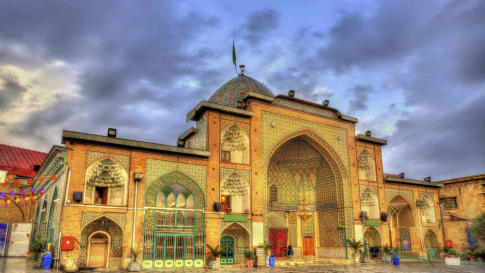
17 days
Sep, Nov, AprIran Culture and History Escorted Small Group Tour for seniors
Visiting Iran
Unlike its neighbours to the west and northwest, Iran had not adopted Christianity and it was the explosive spread of Islam and its ready adoption, without the Arabic language or customs, which helped unite the culture and greatly enrich Persian heritage. This small group tour program includes the great cities of Iran, historic sites, mosques, gardens, bazaars and teahouses for couples and solo travellers.
From A$11,825 AUD
View Tour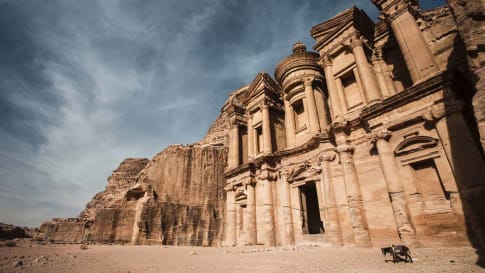
9 days
Jan, OctAncient History of Jordan | Escorted Small Group Tour
Visiting Jordan
Explore Jordan, visiting its capital city, Amman Jordan, the ancient Desert Castles, Petra and the Dead Sea on a small group package tour for mature and senior travellers travelling as a couple or Solo.
From A$6,750 AUD
View Tour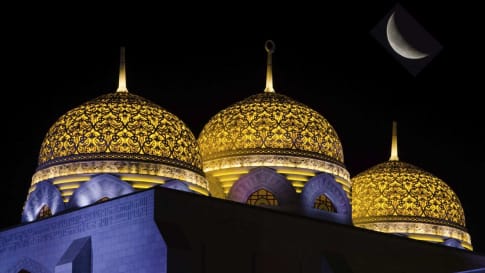
days
OctOman Small Group Tour
Visiting Oman
The Sultanate of Oman is a country of diverse natural beauties and fascinating human history. Oman boasts medieval forts and watchtowers, Bedouin villages, spectacular fjords, bustling markets, date palm plantations, and sand dunes.
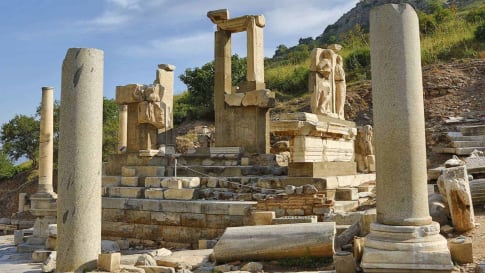
21 days
Apr, AugSmall group tour of Ancient Turkey
Visiting Turkey
As a travel company we seek to keep guests off the beaten path. Trips that are remembered for authentic experiences. Our small group journeys in Turkey are fully escorted by an experienced local guide and an Odyssey guide to give this type of experience whether at one of the many UNESCO World heritage sites explored or local bazaars. It is always about the adventure and memories that we will create.
From A$17,295 AUD
View Tour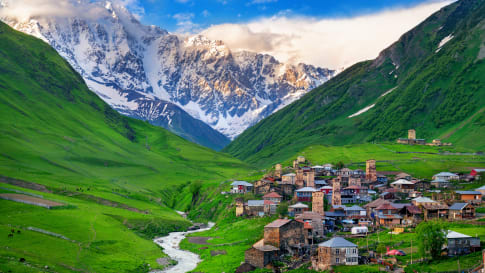
22 days
May, OctSmall Group Tour to the Caucasus | Armenia Azerbaijan Georgia
Visiting Armenia, Azerbaijan
This small group program is designed to give people an opportunity to explore Tbilisi, Baku, Yerevan as well as important monuments, historical and religious sites, diverse landscapes and ancient architecture by visiting the Caucasus Mountains and the lowlands of Armenia, Georgia and Azerbaijan. Led by local English speaking guides, there will be the opportunity to meet local people.
From A$12,425 AUD
View Tour


